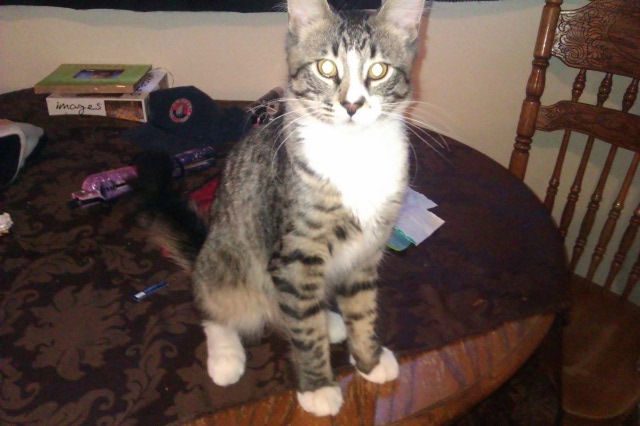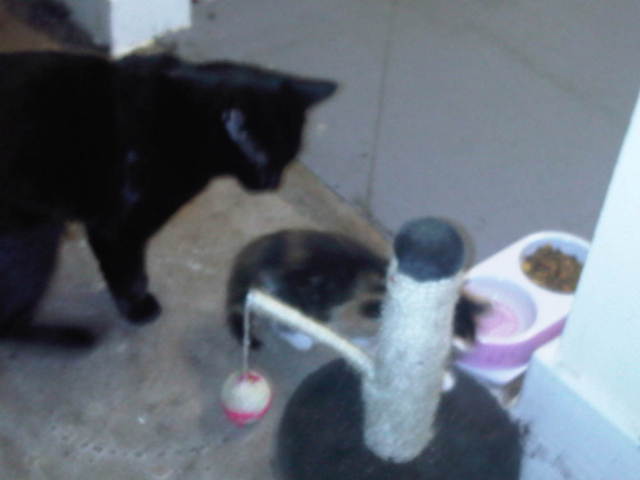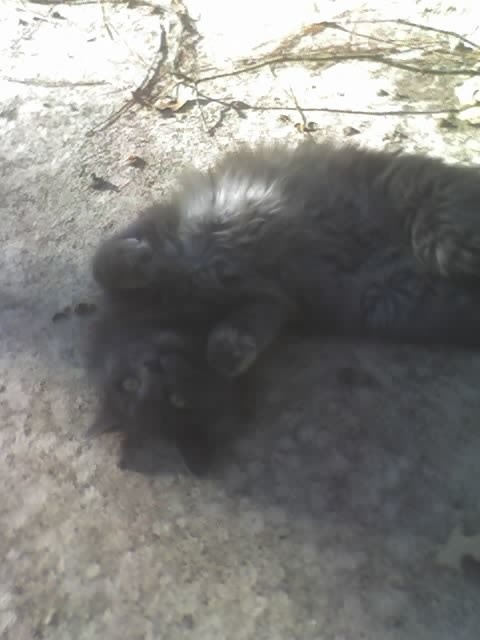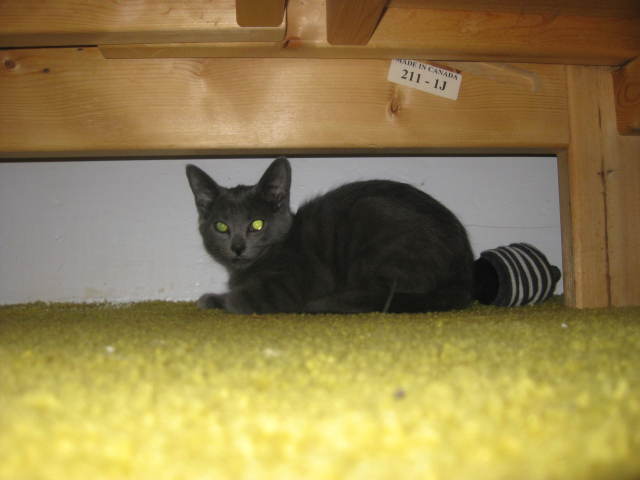QuestionHi,
Thanks for making yourself available to answer questions.
I am a new feral "cat lady." I got my first feral cat a year ago. I was looking for a mouser and figured a feral cat would be a better bet than a house cat. This cat has become a lap cat and has helped me to learn to love them.
So, my husband and I have two ferals now that can be handled. We volunteer at spay/neuter clinics and hope to save more by taking them into our barn. The problem is, they keep running away. Any advice on how to establish them in a rural setting? We keep them confined for 2-3 weeks and feed them well. We use one of the ferals as an "anchor". We take him inot the barn with us so that the ferals can see us petting him and will know that we are friendly. However this "feral" is now and inside/outside cat and will not be living in the barn. Do you think it's a good idea for us to get a socialize barn cat who will live in the barn for this purpose? We live in the woods. Do you have any tips for safety from raccoons? We have a feeding stand that the raccoons can't get to. We also have a cat door to the barn that doesn't give access to raccoons.
Thanks!
Laura
AnswerHi Laura,
Bless you for taking care of these cats and helping to spay and neuter feral cats in your area!
Relocating cats is a very difficult thing, and at the Stanford Cat Network we try to do this only when absolutely necessary. As you know cats like to stick with their chosen territory and don't take well to moves.
However with your barn, you have an ideal opportunity to set up what you need. You need a holding pen - a large cage or enclosure (cat proof of course, and predator proof). It can be as small as 10' by 5' but larger is great. When we do relocate cats, we place them in the holding pen in their new location for at least one month, usually 2-3 months. 2-3 weeks is not enough time for the cats to consider the place home. This may seem like a long time to be in a cage, but the feral do not seem to mind, they know they are safe and get used to being fed... and it is the best way to get them acclimated to their new lifelong home. We have a litterbox in place as well which most ferals will use if a sand-type litter is put in it. You could use a stall in the barn with chicken wire added above the boards to the ceiling, and if possible an outdoor component.
Once the cat has lived in the holding pen for a long enough to settle in, we open the door and allow them to leave when they choose, but continue to feed them in the same location inside the pen, or if the cat won't go back inside, just outside the pen. It's also important for the pen to be in the actual area the cat would live - in the barn in this case (I am not sure if you were confining them in the house or barn).
Once you have a few cats in the area, any new arrivals will meet the resident cats through the pen, which helps them get to know eachother too - and the pen can serve as a place to keep injured or ill cats.
It's also very important to provide safe-seeming shelters for the cats in the enclosure and for one they are outside. Cats like a den with more than one entrance.
For ideas on building a cat enclosure or places to buy pre-made ones, look here (most of these are meant as additions to homes for indoor cats but the same principal applies for making a holding pen):
http://catnet.stanford.edu/articles/enclosures.html
Raccoons can be very dangerous to cats - we have, over the years, lost a few cats on campus to fights with raccoons. The best way to protect your acts is to keep them closed in the barn at night. You can accomplish this by using a 4 way locking cat door and serving dinner at the same time each night (not free feeding) after setting the cat door to lock them in as they arrive. Then in the morning unlock the door and the cats leave when they like. Ideally, begin a feeding schedule before allowing the cats out of their holding pen - cats are very aware of their feeding time and are always waiting at the feeding stations for us! This ensures that you see each cat every day and can take stock of their health as well. You may want to look at the SCN feeding guidelines as well:
http://catnet.stanford.edu/articles/feeding_guidelines.html
If locking them in at night is not possible, then avoid feeding the cats at any time when raccoons are active - most fights are about food, although the cats may try to defend their territory as well. This means feeding during daylight hours when possible, and as you have said feeding in a location inaccessible to the raccoons (though raccoons may get into places you wouldn't expect!). Don't leave food out, leave only what the cats will eat within an hour.
I also highly recommend microchip ID for feral cats - if they do turn up in a shelter it could save their life. We have had several cats' lives saved by the chips, as shelters generally euthanize ferals quickly.
Finally, I do think adopting a barn cat could be a good idea - but you'll probably have to confine him/her at first too. But you are right a tame cat is more likely to stick around, and won't require confinement for quite as long. Most feral cats are pretty social with other cats and will recognize the presence of another cat as a good sign. I'd recommend a mellow male cat for this job :)
Here is some more information on relocating feral cats:
http://www.americancat.net/relocation.html

 What Breed Is My Cat ??
Question
Cloud1 Cloud2
Hey, my boyfriend a
What Breed Is My Cat ??
Question
Cloud1 Cloud2
Hey, my boyfriend a
 Cat keeps biting neck of new kitten
Question
my babys
Hiya I have adopted a new kitten (fem
Cat keeps biting neck of new kitten
Question
my babys
Hiya I have adopted a new kitten (fem
 Persian Male Behavioral Issues.
Question
Jimmy
Dear Karen
Hope you are fine. I
Persian Male Behavioral Issues.
Question
Jimmy
Dear Karen
Hope you are fine. I
 shots/food
QuestionQUESTION: Teresa,
Silver is a wild kitten we he
shots/food
QuestionQUESTION: Teresa,
Silver is a wild kitten we he
 Shaking? Or is it from her purr?
Question
Prada Under our bed
We just adopted a Himalaya
Shaking? Or is it from her purr?
Question
Prada Under our bed
We just adopted a Himalaya